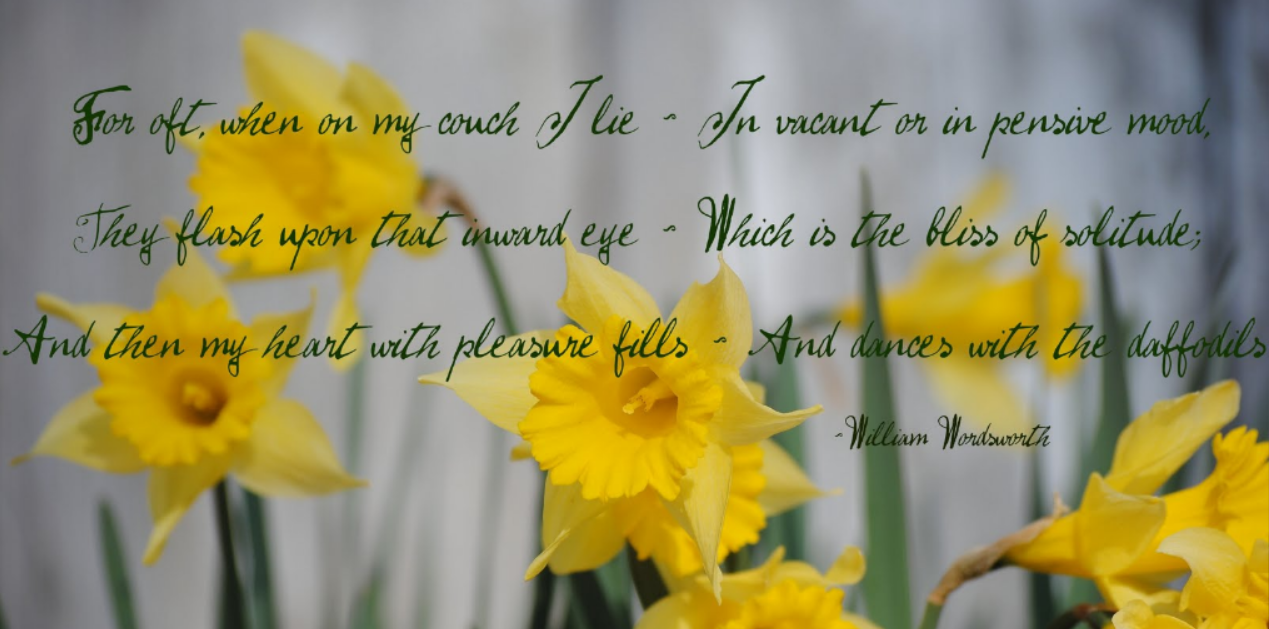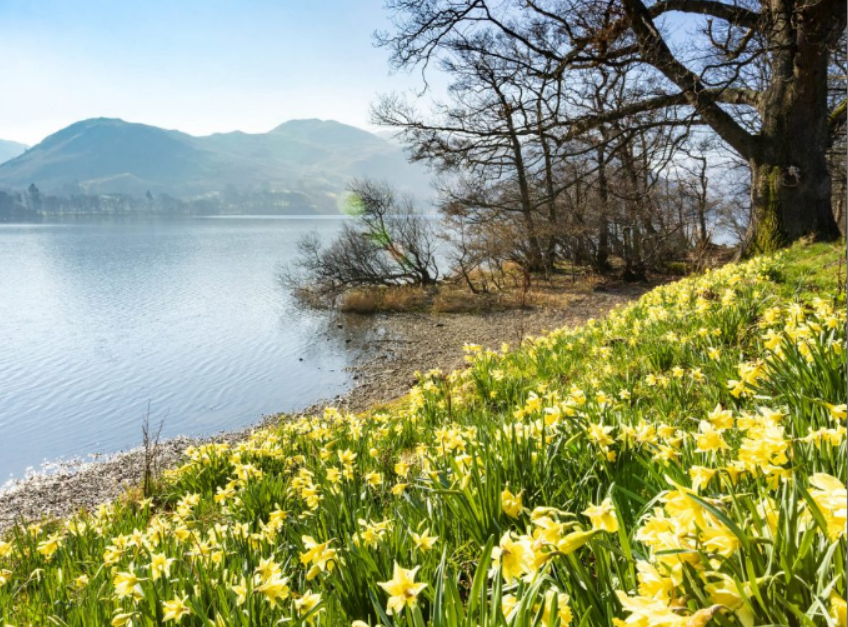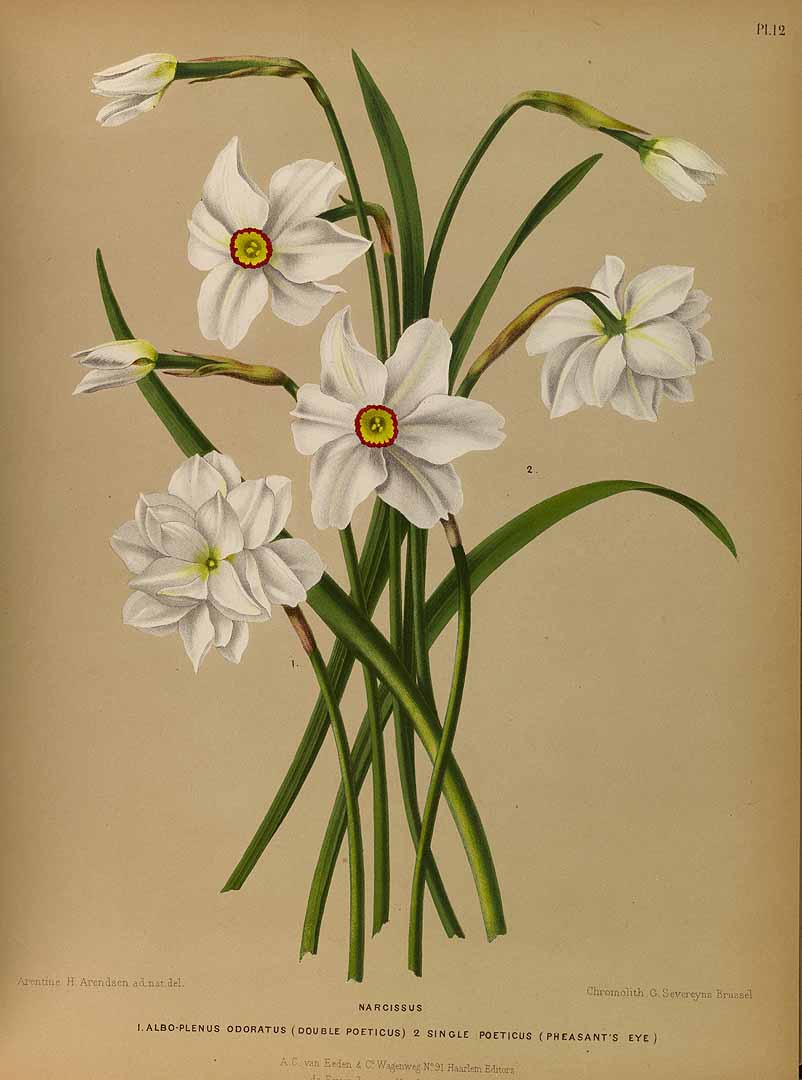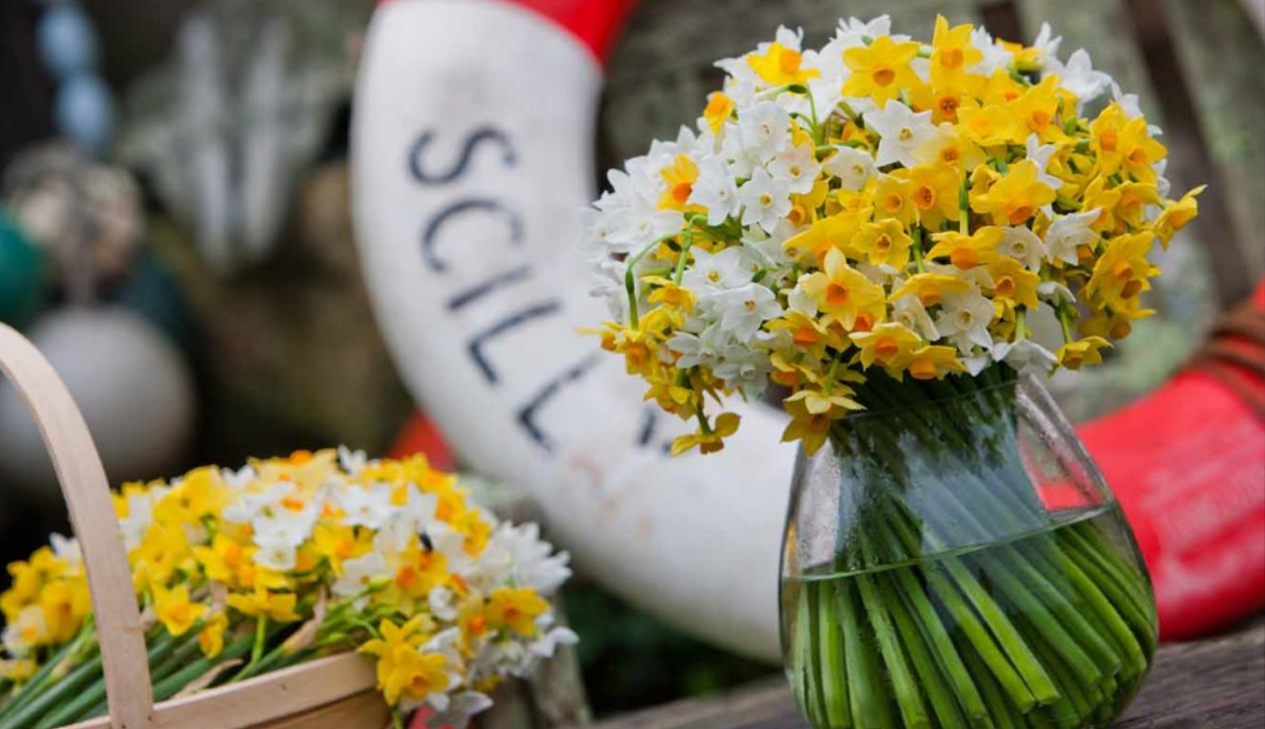|
To me they are Narcissus but to many they are daffodils, yet in essence, they are the same plant. When they start to bloom, some as early as February, these cheery, bobbing harbingers of spring lift your spirits when many plants in the garden have yet to dare to open either flower or leaf. Narcissus bulbs are like bears: they go dormant in winter; they need several weeks or months of cold temperatures to prepare them for regrowth. But when spring sunlight starts to warm the soil around them, they emerge from their winter sleep and erupt from the ground in a frenzy of flowering.. They grow just about anywhere, except really shady and really dry and are as hardy a flower as you are likely to get. Wild Narcissus are found in a variety of habitats from sea level to subalpine meadows, from woodlands to dry, rocky slopes in Europe and North Africa with the greatest variety found in Spain but they can also be found in Portugal, western France and Italy, in Morocco and many other European countries. It is thought that the Narcissus bulbs were brought to Britain by the Romans and then on into Ireland. For centuries the wild forms were all that were known and grown and in the 19th century the classification of the many species was attempted. Swedish botanist Carl Linnaeus originally identified six species of Narcissus flower in his work, Species Plantarum,, in 1753 but dozens more species and sub-species have since been acknowledged. Due to varying expert opinions on what qualifies as a ‘species or sub-species’, there is no universal consensus as to precisely how many exist. Daffodils are arguably the most recognizable flower in the Narcissus genus. though the name daffodil only dates back to around the 1500s. Before this, these flowers were called “Affodyle”, which means “that which comes early” in old English.. It is said that all daffodils are Narcissus, but not all Narcissus are daffodils and others that are now recognised as distinct species are:-
Although the name daffodil is often applied only to the larger trumpet-flowered cultivars, with the short-cupped and multi-headed cultivars referred to as narcissus, breeders and other enthusiasts refer to all kinds as daffodils. Due to their popularity as reliable garden plants, thousands of cultivars have been bred and are continuing to be bred, to provide scent, colour, size and long flowering. Narcissus are members of the Amaryllis family with a central trumpet-shaped corona surrounded by six petals with the flowers atop a single stem, surrounded by flat leaves that grow from the plant’s base. Most Narcissus are yellow or white in colour, though the strength of the yellow varies from rich bright yellow to subtle creamy yellow or even tinged with a greenish hue. Some have a trumpet that is tinged with orange or pink, even red is seen in some garden varieties and some have the trumpet and petals of differing colours. The popularity of Narcissus seems to increase as people find they can be planted, in large swathes to naturalise in grass and woodland edges but the smaller forms can be used in pots and raised beds to bring the spring right up to the house. The small amount of time, effort and money that is spent on planting and growing them will be repaid in spades; the bulbs you plant in the autumn will flower each spring for many years to come, as will their many offspring as the continue to multiple. Narcissus are of one the flowers for a March Birthday; yellow narcissus symbolise positive energy, happiness, good fortune and friendship whereas white narcissus represent; creativity, inspiration, awareness and inner reflection but the colour white is also widely associated with peace, purity and innocence.
A daffodil bouquet is sent or presented to celebrate a 10th wedding anniversary. The Isles of Scilly grow narcissus commercially on four of the five inhabited islands, keeping up the long-held island tradition of producing high quality and beautifully scented narcissus for which they are famous. They are a group of about 200 small islands about 45km off Land's End and form a part of the historic county of Cornwall. A single daffodil is paid each year as the rent for the Isles of Scilly to the Duchy of Cornwall.
0 Comments
Leave a Reply. |
WildEdges
A haven of quiet countryside highlighting issues affecting the natural world. Categories
All
|





 RSS Feed
RSS Feed